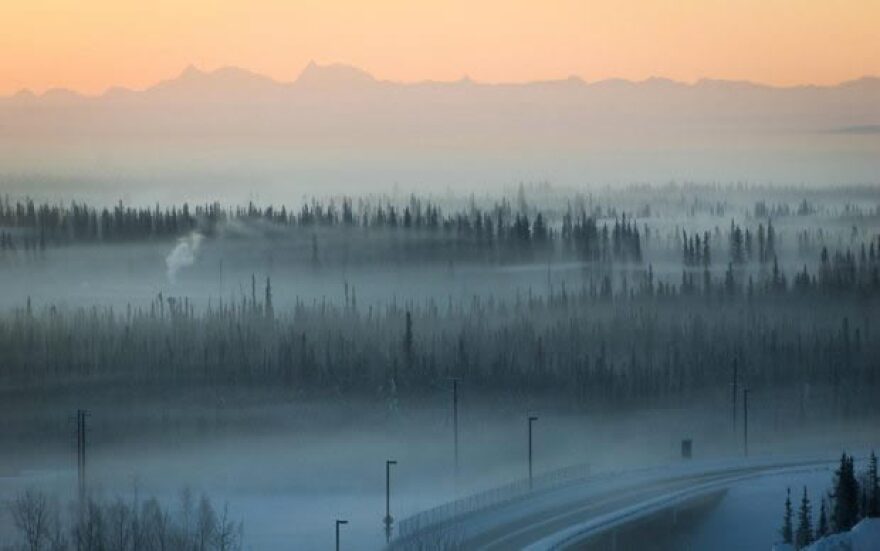Clean air advocates say they’re disappointing that local and state regulators haven’t made more progress in getting the Fairbanks North Star Borough’s air-quality program up and going. As KUAC’s Tim Ellis reports, Citizens for Clean Air members are worried the slow-moving process could jeopardize the local program, because opponents are already working to get an initiative before voters in the fall.
Citizens for Clean Air coordinator Patrice Lee told the regulators and two top Assembly members at a meeting Tuesday that the slow process of establishing the local program may give the public a perception that it’s not going to improve the area’s air quality. She cites the example of the state Department of Environmental Conservation’s review of the ordinance adopted by the borough Assembly on Feb. 27 that established the program.
“We found out that it takes more time than what has happened for ADEC to go through the ordinance and decide which parts would actually strengthen the SIP,” Lee said.
The state implementation plan, or SIP, spells out how the DEC intends to improve the Fairbanks area’s air quality enough to bring it into compliance with federal law.
Cindy Heil, with the DEC’s Air-Quality Division, says her agency intends to complete its review of the ordinance soon, then add portions of it to an amended version of the state plan.
“We’re hoping to do that this summer,” Heil said. “That’s still our intent.”
Heil says it takes time to conduct a thorough review and the followup public comment period.
Borough Air Quality Manager Ron Lovell says his agency can’t do much yet because it’s still awaiting funding.
“We don’t have the resources at this point,” Lovell said. “I mean, I’m barely getting by with what I’ve got.”
Lovell says the borough administration will propose funding for the program at the April 9th Assembly meeting, and that he hopes to have a budget by the end of the month.
Lee says the clean-air advocates also were disappointed to learn that five months after voters defeated a measure that would’ve kept the state in charge of local air quality, the borough still has only one operator for its one vehicle equipped with a mobile device that measures air quality. And that the borough air-quality staff lacks training to determine the opacity of smoke – a measure of how dark it is coming out of the stack.
“We defeated Prop 2 in October. And it’s now April,” Lee said. “And no one has been to opacity training. That’s been something that’s integral to any kind of an air-quality plan.”
No opponents of borough air-quality management were at Tuesday’s meeting at the DEC office in Fairbanks. Assembly Presiding Officer Karl Kassel and Deputy Presiding Officer John Davies both were present. Davies agrees it’s important to show progress on the air-quality program as quickly as possible. He says the work that’s been done since the Assembly adopted the ordinance on Feb. 27th has come at the bureaucratic equivalent of the speed of light.
“A lot of what we heard was frustration and it doesn’t appear that we’re moving fast enough,” Davies said. “And I think that most of us on the Assembly share that concern – that it takes a long time to get these wheels moving.”
But Citizens for Clean Air member Joan Franz says advocates are worried that without solid progress on the local air-quality effort, would-be supporters might not vote to keep the borough in charge of the program if opponents again succeed in placing it on an upcoming ballot.
“We may lose those people to – ‘Well what difference does it make? What difference did it make?’ And I’m afraid of losing some of those people,” Franz said.
Davies agrees that the support of who he calls the “middle-of-the-road” voters will be essential if the issue again ends up on the ballot. He says he’s been assured that opponents are determined to get a citizens initiative before voters in the fall.



